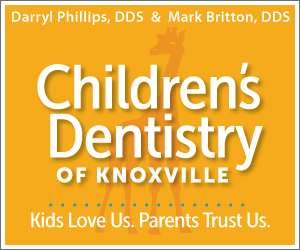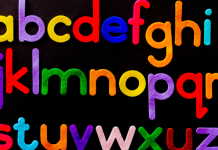 “I’d like to refer him to Child Find and see if they can help.” These words started what has become a real journey for me and my family. At the time my pediatrician said it, I sat in confusion, not sure what Child Find was and thinking it must be the same thing as Early Intervention, something I’d experienced with my oldest child when he was much younger. I didn’t know the two were different programs entirely and under two separate umbrellas.
“I’d like to refer him to Child Find and see if they can help.” These words started what has become a real journey for me and my family. At the time my pediatrician said it, I sat in confusion, not sure what Child Find was and thinking it must be the same thing as Early Intervention, something I’d experienced with my oldest child when he was much younger. I didn’t know the two were different programs entirely and under two separate umbrellas.
Perhaps you’ve found yourself in a similar place or maybe you’re curious what Tennessee Early Intervention Services or Child Find does for kids and families. I’m hoping to share a little more about the programs from the perspective of a parent whose kids are receiving services currently. I have one child in the Child Find program and another in Early Intervention, and I recently went through the evaluation parts of both services.
Here’s my parent’s guide to navigating the two programs.
What is Child Find and what does it do for my child?
The simple answer is that Child Find is a program under the auspices of the school system. It’s entirely run by the Knox County School system, and it’s designed to assist children from the ages of 3 to 5 who might need special education services in order to thrive once they reach school age. From their website, “areas evaluated may include but are not limited to: vision, hearing, speech and language, fine and gross motor, cognitive/pre-academic, social/emotional and adaptive development.” In short, the school system evaluates young kids in order to see if they need additional help prior to moving into the public school and offers services to help get them on track so they can be confident when they enter kindergarten.
What is Early Intervention and what does it do for my child?
Early Intervention is a state-run service that helps young children with disabilities and delays. It’s primarily intended for children from birth to 2 years old with the possibility of extending service to 3 years of age under certain circumstances. In addition, if the child remains in the program through the duration, there is the option to be evaluated through Child Find towards the end of service time to determine if your child can continue to receive services through that program.
What do the Child Find and Early Intervention programs cost?
This is probably a big question in most parents’ minds. Therapies can be extremely expensive, and one reason doctors will refer out to these programs is because they’re free of charge. Yes, that’s right. Free.
For Child Find, the program is done through the local schools. In my case, my son qualified for speech therapy, which he receives at the local elementary school we’re zoned for, and he has therapy once a week. Since it’s done under the school system, it doesn’t go through our insurance at all, and the goal is to help his speech develop appropriately so he won’t be hindered once he reaches kindergarten.
For Early Intervention, it’s a little more complex. The Early Intervention program uses your health insurance, if you have it, and finds you service providers that accept your insurance. Once that’s set up, then the state pays your copays for therapies rather than it going to you.
What does the evaluation process look like?
My doctor gave me the number to contact Child Find, and once I got in touch with them, they set up two evaluation dates and times. The evaluation for my middle child consisted of one day where we went to their facility for a quick vision and hearing screening and a second day where we visited the same facility and sat with a panel of therapists who took turns evaluating my son for physical therapy, speech therapy, occupational therapy, and behavioral therapy. It took around an hour, and the room was furnished with a nice set of toys and a space for them to take him to a screened off area for certain tests that he was happy to complete with some encouragement. Then I waited for around a month before they contacted me for a virtual meeting with the same therapists to discuss their findings and what therapies he qualified for. We discussed a plan of action going forward, and I signed the required documents to verify our participation in the program. Then I had another wait to get set up with the therapist at our elementary school before he could get started.
The process for Early Intervention was a little different. The Early Intervention evaluation started with a phone call where the evaluator confirmed that I did want to proceed and felt it would benefit our baby. Then she scheduled a day to come out and evaluate him in our home. We settled into our nursery, and she spent about an hour playing with him and asking me questions about my concerns and his development. Following that, I waited for and received an email with the results of the evaluation along with a call from them to set me up with a service coordinator. The service coordinator and I had a virtual meeting to discuss what therapies he would receive and to make sure all of our paperwork and documentation was correct to be submitted to the state along with our family plan. Then I only had to wait for the designated therapists to contact me and set up our appointments.
What happens after you get started with the services?
Like any regular appointment, I take my kids where they need to be when they need to be. Both programs encourage parental involvement, so I get a lot of feedback from my kids’ therapists on things we can try at home to help with their progress. The Early Intervention program involves regular visits with our service coordinator to track progress and discuss any changes to the plan that need to be made. The Child Find program has an annual meeting to discuss progress and update plans for the following year. With both services, lots of open communication is encouraged so parents know what they’re looking at for their kids, and they spell out exactly what is expected of therapists, kids, and parents so you have no questions.
Who can refer a child to these programs?
If you’re reading this and thinking your child might benefit from one of these services, just know that you can refer your own child to Early Intervention or to Child Find! You can discuss it with your pediatrician if you prefer to have an official referral, but if you already think your child might need some development assistance, you can certainly refer them yourself. The evaluations are free, so it doesn’t hurt to get your concerns checked out and see what your child might qualify for.


















